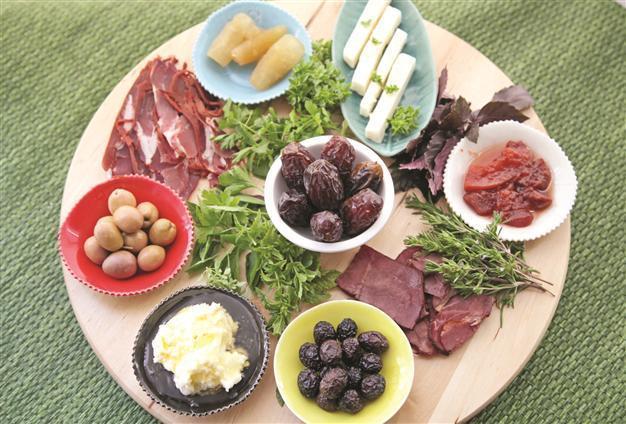Ramadan in the Ottoman palace kitchen
ISTANBUL - Anatolia News Agency

The dishes prepared in the palace kitchen were chosen according to what was in season. Hürriyet photo
Many traditions were observed at Ramadan, the holiest month of the year in the Islamic world, during the Ottoman era, especially at the sultan’s court. İftar (fast-breaking time) was a special ceremony at the palace. Everything was prepared many hours before iftar time.When the month of Ramadan began, it was a time of great excitement and liveliness for the people of the palace, Nilgün Tatlı, a food culture writer and researcher, told Anatolia news agency.
“Preparations for Ramadan would begin at least two months before the holy month. Cutlery and crockery would be made ready for iftar meals. New prayer rugs and clothes would be purchased for the people working at the palace. General cleaning was done at the palace, and many pots and trays were re-plated with tin.”
The number of people working in the palace kitchen increased during the Ramadan, as well, Tatlı said.
Seasonal food used
“According to the season that Ramadan coincided with, the court would use seasonal foods, including figs, grapes, cherries and pomegranates from İzmir, apricots from Malatya and Damascus, peaches from Bursa, various honeys from Ankara, olives and olive oil from the Aegean region, okra from Amasya, melons from Manisa, and roses from Isparta would be brought to the palace kitchen. Dairy products would come from Kanlıca, vegetables from farm gardens, and fresh fish from the Bosphorus,” she said.
These foods were preserved in cellars built under the palace buildings. “These rooms were built with special stone that kept the foods cool and free from moisture,” Tatlı said.
Dishes prepared in the palace kitchen
The dishes prepared in the palace kitchen were generally very healthy ones, and the style of service was considered as important as the cooking style. Many of these dishes were made with various vegetables and fruits.
“A plate of appetizers including dates, nuts, cheese, honey and olives eaten before the main course. The starters were usually chicken soup with rice, zucchini soup, lentil soup or yogurt soup. Veal dishes prepared with apricots, dates and plums were among the main courses until the 15th century. After the 15th century, imported tomatoes, beans, eggplants, zucchini and peppers were added to the veal dishes. Substantial dishes like stewed fruit, sherbet, rice, and pastries were preferred. Pancakes were the most preferred foods for sahur (the morning meal eaten in Ramadan).”
A great deal of fruit was consumed at the palace, and desserts had an important place in the food culture of the Ottoman court, Tatlı said.
“Güllaç (a dessert made with milk, pomegranate and a special kind of pastry) was the symbol of Ramadan in Ottoman times just as it is today. The most often-consumed sweets were baklava, stewed fruit, and candied pumpkin,” she said.
There were similarities between the meals prepared in the palace kitchen and those prepared in the kitchens of ordinary people. “The meals cooked in the palace kitchen were also given to the families of the kitchen staff. The rest of the meals were sold to citizens at a low price,” Tatlı said.
















